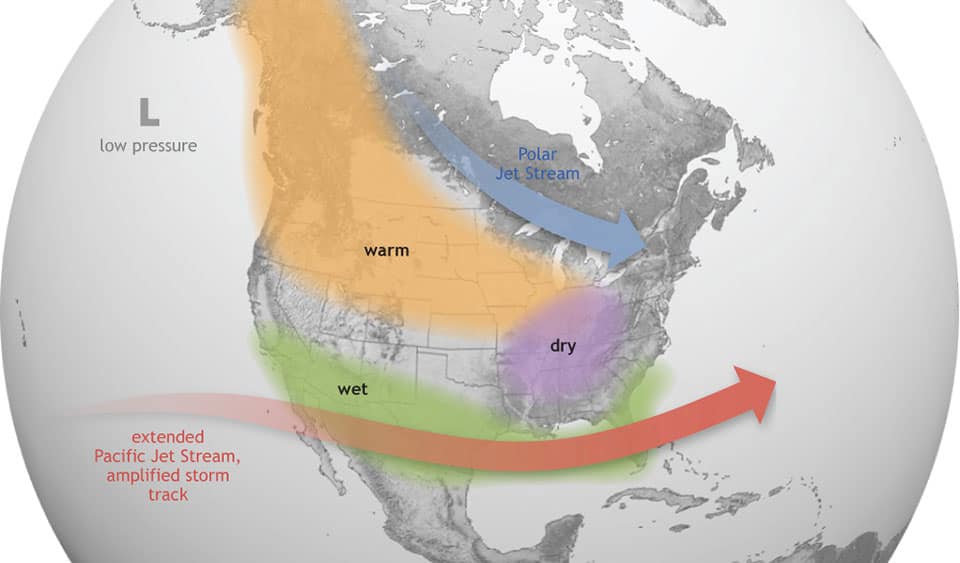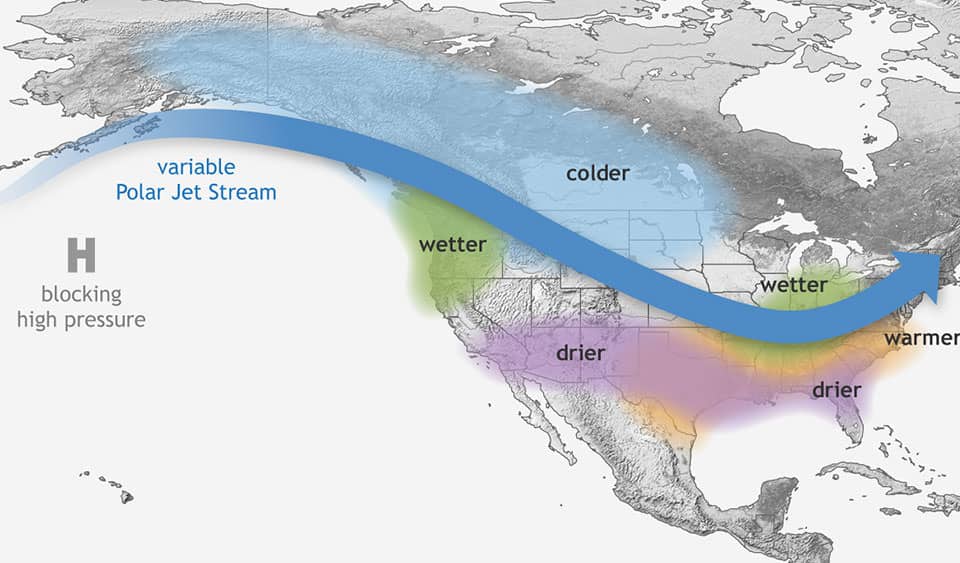What’s the difference between El Niño and La Niña and how do they affect the weather?
January 25 , 2023

El Nińo and La Nińa are mainstream terms, but what do they really mean and how do they influence the weather? Both of these terms are complex climage patterns in the Pacific Ocean that can affect weather worldwide. During normal conditions in the Pacific Ocean, trade winds blow west along the equator, taking warm water from South America towards Asia. To replace that warm water, cold water rises from the depths. El Niño and La Niña are two opposing climate patterns that break these normal conditions. Scientists call these phenomena the El Niño-Southern Oscillation (ENSO) cycle.
El Niño and La Niña typically last nine to 12 months, but can sometimes last for years. El Niño and La Niña events occur every two to seven years, on average, but they don’t occur on a regular schedule. Generally, El Niño occurs more frequently than La Niña.
So, what’s the difference? Imagine them as brother and sister. El Nińo means ‘The Little Boy’ in Spanish, so think of El Nińo as big brother. La Nińa means ‘The Little Girl’ in Spanish, so consider La Nińa as the little sister. Like siblings they contrast and can be very different.
El Nińo Is Known As The Warm Phase
Big brother, El Nińo, is known as the “warm phase” of the oscillating pattern and typically brings along more extreme weather and typically peaks around December. Warming Pacific Ocean surface waters cause the tension in the atmosphere that results in warmer than average temperatures over much of North America during winter months. Southern states can expect to be a bit cooler and wetter than normal. The warmer Eastern Pacific waters change global weather dynamics and fosters the odd weather. The effects are strongest during northern hemisphere winters because ocean temperatures globally are at their warmest.

El Niño causes the Pacific jet stream to move south and spread further east. During winter, this leads to wetter conditions than usual in the Southern U.S. and warmer and drier conditions in the North. – NOAA
La Nińa Is Known As The Cool Phase
Little sister, La Nińa, is known as the “cool phase” and ushers in cooler than normal temperatures. La Nińa will still result in winter storms, but usually not as severe as big brother. During a La Nińa winter, temperatures tend to be warmer in the Southeast and cooler in the Northwest. Southern states will tend to see less precipitation and even drought, while the Pacific Northwest and Canada can have heavy rains and flooding. La Nińa can also lead to a more severe hurricane season.

La Niña causes the jet stream to move northward and to weaken over the eastern Pacific. During La Niña winters, the South sees warmer and drier conditions than usual. The North and Canada tend to be wetter and colder. – NOAA
